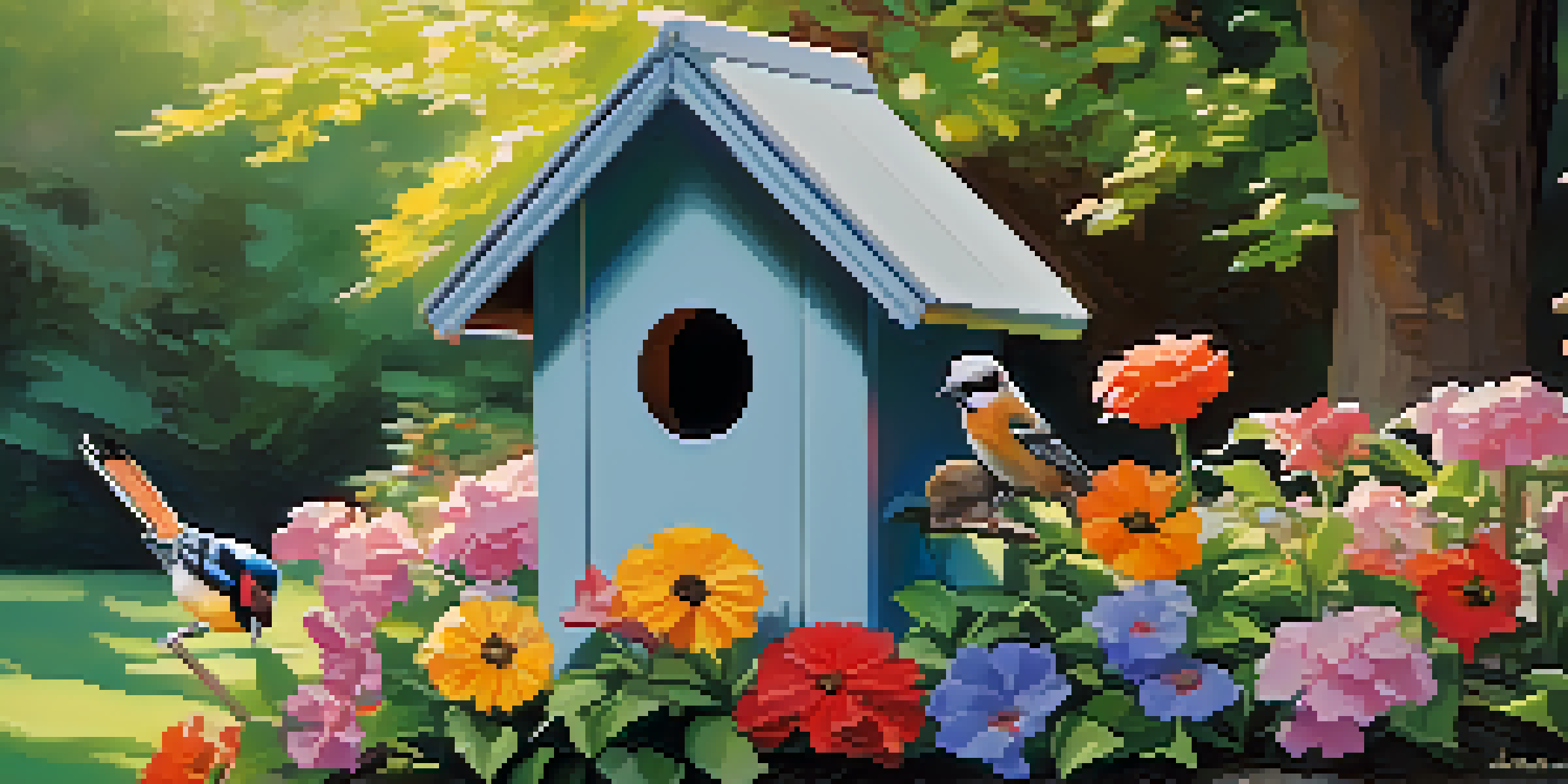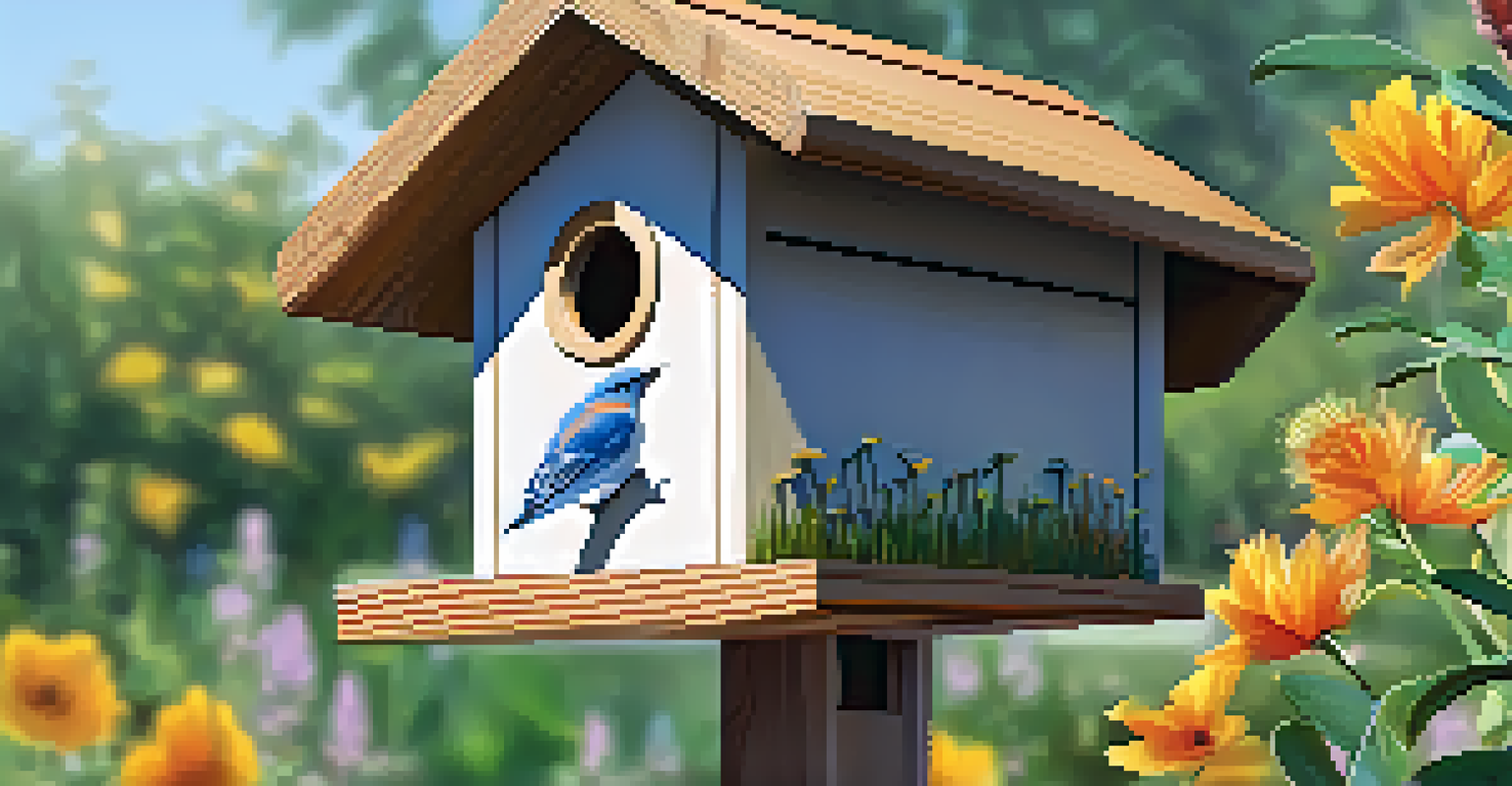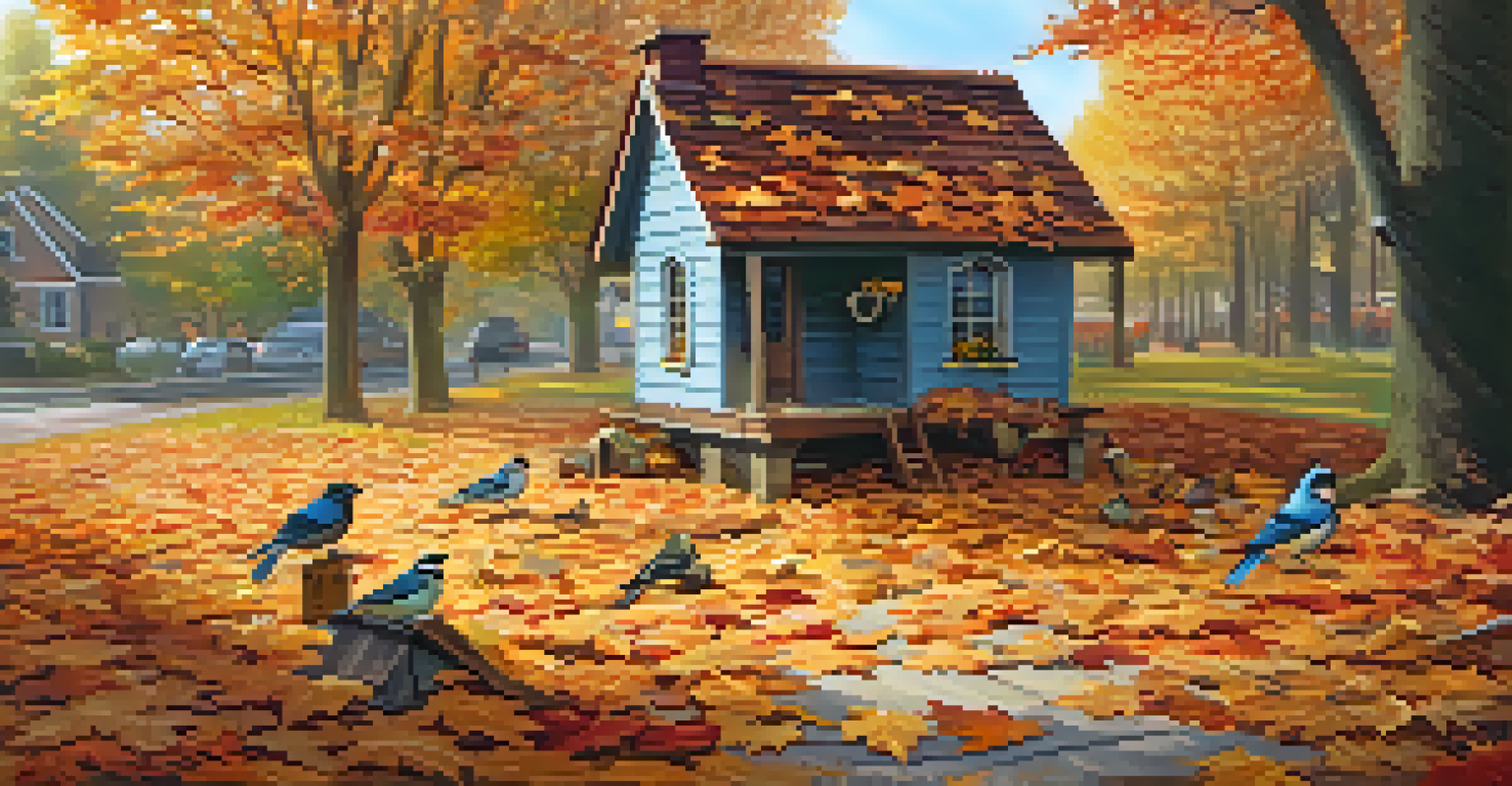Understanding Bird Behavior: Tips for Successful Birdhouses

The Importance of Understanding Bird Behavior
Understanding bird behavior is crucial for creating effective birdhouses. Birds are not just random creatures; they have specific needs and preferences that dictate where they feel safe and comfortable. By observing these behaviors, you can tailor your birdhouse designs to attract a variety of species, ensuring they have a welcoming place to nest.
The love for all living creatures is the most noble attribute of man.
For instance, different birds prefer different nesting environments. Some species, like bluebirds, look for open spaces with nearby perches, while others, such as wrens, seek hidden, sheltered spots. Recognizing these distinctions can significantly enhance your chances of successful birdhouse occupancy.
Moreover, understanding seasonal behaviors, such as migration and mating habits, allows you to time your birdhouse installations effectively. By aligning your efforts with their natural rhythms, you create inviting spaces that cater to their needs throughout the year.
Choosing the Right Location for Your Birdhouse
The location of your birdhouse can make all the difference. Ideally, you want to place it in a quiet area, away from heavy foot traffic and loud noises, as birds are quite sensitive to disturbances. A peaceful environment helps them feel secure and more likely to settle in.

Consider factors like sunlight and wind direction when choosing a location. Most birds prefer houses that receive morning sunlight but have some shade during the hottest part of the day. Additionally, placing the birdhouse in a sheltered spot can protect it from harsh winds and rain, making it a cozy retreat for your feathered friends.
Understand Bird Behavior for Success
Observing bird behavior helps tailor birdhouse designs to meet the specific needs and preferences of different species.
Finally, think about the height at which you install the birdhouse. Different species have varying preferences; for example, wrens often nest closer to the ground, while bluebirds prefer higher placements. Researching the ideal height for your target species will increase the likelihood of attracting them to your birdhouse.
Selecting the Right Materials for Birdhouses
Choosing the right materials is vital for constructing a durable and safe birdhouse. Untreated wood is often the best choice, as it provides natural insulation and is safe for birds. Cedar and pine are excellent options, as they resist decay while being lightweight and easy to work with.
Birds are indicators of the environment. If they are in trouble, we know we’ll soon be in trouble.
Avoid using painted or treated wood, as chemicals can be harmful to birds. Additionally, ensure that any metal components, like nails or screws, are rust-resistant. This attention to detail will not only prolong the life of your birdhouse but also ensure a safe environment for your avian visitors.
Lastly, consider incorporating ventilation and drainage holes into your design. These features help regulate temperature and moisture levels inside the birdhouse, creating a comfortable space for nesting and raising young birds. Proper construction will make your birdhouse a safe haven for years to come.
Designing Birdhouses for Specific Species
Not all birdhouses are created equal; each bird species has unique requirements for nesting. For example, bluebirds prefer houses with a 1.5-inch hole, while chickadees often opt for a slightly smaller entrance. By designing birdhouses tailored to specific species, you increase your chances of attracting them to your yard.
Additionally, the dimensions of the birdhouse matter significantly. Different species require varying amounts of floor space and height for their nests. Researching the preferred dimensions for your target birds will help you create a comfortable and inviting space.
Choose the Right Location
Placing your birdhouse in a quiet, sheltered area with the right sunlight and height is crucial for attracting birds.
Incorporating features like perches and specific entry hole shapes can further entice certain species. For instance, some birds prefer a small entrance that keeps out larger competitors, while others benefit from a perch that provides a landing spot. Tailoring your design to these specifics enhances your birdhouse's appeal.
Maintaining Your Birdhouse for Long-Term Use
Regular maintenance is key to ensuring your birdhouse remains a safe haven for birds. After the nesting season, it's essential to clean out old nesting materials to prevent the buildup of parasites and diseases. A simple scrub with hot, soapy water can do wonders in preparing the house for future residents.
Inspect the birdhouse for any signs of wear and tear, such as cracks or loose parts. Addressing these issues promptly helps maintain a safe environment for nesting birds. Repairing or replacing damaged components ensures that your birdhouse remains functional and inviting for years to come.
Additionally, considering seasonal changes is crucial. In colder months, you might want to add insulation or adjust the entrance hole to accommodate different species. Adapting your maintenance routine based on seasonal needs can make a significant difference in the success of your birdhouse.
Understanding Bird Communication and Behavior
Birds are social creatures, and understanding their communication can enhance your birdwatching experience. Each species has its unique calls and songs, which they use to communicate with one another. Familiarizing yourself with these sounds can help you identify visitors to your birdhouse and understand their needs.
Observing bird behavior around your birdhouse can also provide valuable insights. For instance, if you notice aggressive behavior from certain birds, it might indicate that they are defending their territory or nesting space. Being aware of these dynamics can help you adjust your approach to attracting different species.
Maintain Birdhouses Regularly
Regular cleaning and maintenance ensure birdhouses remain safe and inviting for nesting birds throughout the seasons.
Moreover, paying attention to how birds interact with their environment can inform future birdhouse designs. Noticing their preferences for perches, nesting materials, or nearby food sources will enable you to create an even more inviting and supportive habitat for them.
Creating a Bird-Friendly Garden Environment
To maximize your birdhouse's success, consider creating a bird-friendly garden. Planting native flowers, shrubs, and trees provides birds with natural food sources and shelter. A diverse garden not only attracts various bird species but also supports the local ecosystem by attracting insects and other wildlife.
Including a water source, such as a birdbath, can significantly enhance your garden's appeal. Birds need water for drinking and bathing, and a clean, accessible water source encourages them to stay longer. It’s a simple yet effective way to create a welcoming environment for your feathered friends.

Lastly, limit the use of pesticides and chemicals in your garden. These substances can harm not only birds but also the insects they rely on for food. Emphasizing organic gardening practices will create a healthier habitat for birds, ensuring they thrive in your backyard.